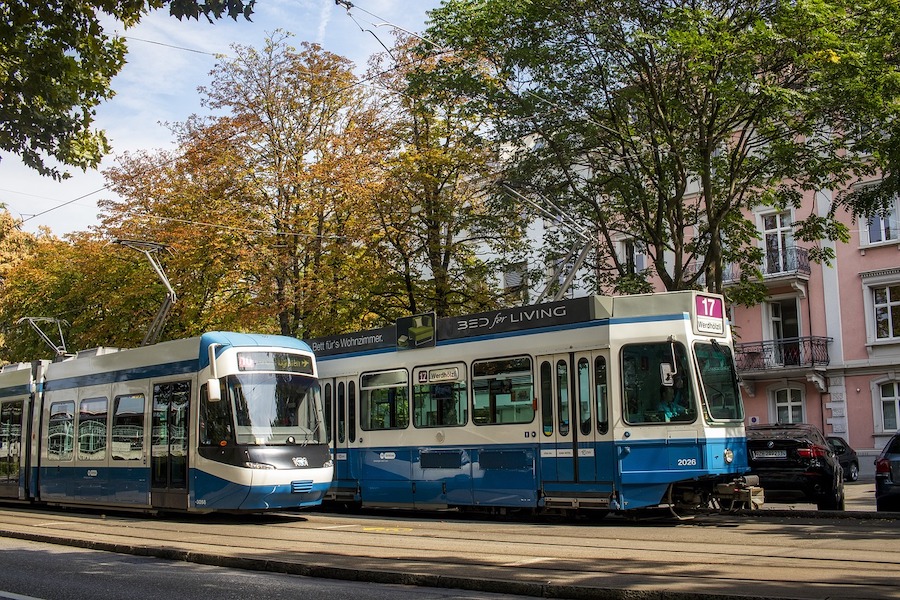Tokyo (SCCIJ) – In the quality of public transport, the Swiss city Zurich ranks 2nd globally out of 60 cities behind Hong Kong, ahead of Stockholm, Singapore, Helsinki, and Oslo. This top ranking is one result of the Urban Mobility Readiness Index 2022. Its overall score puts Zurich in fifth place worldwide, up five ranks from last year. Tokyo is ranked at #15.

Public transport in Zurich is rated as the second-best worldwide (Source: Pixabay).
Tram dominance
The New York-based Oliver Wyman Forum and the University of California at Berkeley compile the annual ranking. It applies five criteria to 60 cities worldwide: social impact, infrastructure, market attractiveness, system efficiency, and innovation. This year, it introduced a sub-index for public transport. With 1.2 million inhabitants, Zurich is the largest city of Switzerland and houses 3,820 people per square kilometer. The average income is 115,496 dollars per capita.
According to the report, Zurich’s public transport system is efficient, affordable, and almost always within easy walking distance. Zurich also benefits from Switzerland’s excellent rail network. City roads – like those in the rest of Switzerland – are safe and high quality which benefits pedestrians and results in low rates of traffic fatalities. One reason is a traffic enforcement structure that incentivizes good driving behavior through an exponential, and ultimately income based, system of fines. Congestion is not a major issue, and air quality is highly rated.
Switzerland’s largest city is planning to release an advanced master plan in 2023, which is likely to integrate urban and social space with transport. It will also feature an urban climate vision and include an agenda for implementation over the next few decades. However, the city’s reliance on trams could cause it to fall behind metro based cities, because the automation of metros has progressed much faster. One reason is that, despite strong public investments in mobility, Zurich is home to few mobility companies, which limits access to private funding for infrastructural upgrades, such as autonomous transit, says the report.
Tokyo features
The Urban Mobility Readiness Index 2022 also lauds Tokyo’s mass transit system, dominated by the world’s most extensive urban rail network of suburban trains and subways, alongside buses, trams, and monorails, boasting frequent service and on time departures. It also connects with Japan’s top notch rail network, including high speed bullet trains.
Given the extensive transit system, private automobiles and motorcycles play a secondary role in urban transport in Tokyo. As a leader in road safety, Tokyo diligently enforces traffic laws and records few fatalities from road accidents. Walking and cycling are much more common than in many cities around the globe, and people use their bikes for everything from shopping trips to work and school commutes. Bikes make around 14% of all trips in Tokyo, much higher than most other big cities, despite limited cycling infrastructure.
Text: SCCIJ with material of the Urban Readiness Mobility Index 2022





























